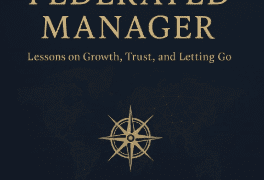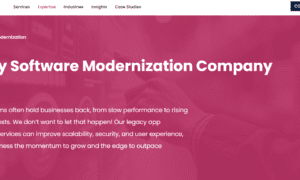Managing finances can feel overwhelming when you use too many tools. Studies show that using multiple systems slows down business operations and increases mistakes. This blog will teach you how to simplify with just five key building blocks for your finance stack.
Keep reading to make managing money easier!
Financial Planning and Analysis (FP&A) Tools
FP&A tools help you plan and track your finances effectively. They support smarter decisions for your business growth.
Budgeting and forecasting
Good budgeting software helps track expenses and set clear spending goals. It ensures you know where money flows and avoids surprises in cash flow. Accurate forecasting tools show future trends, helping businesses prepare for upcoming costs or growth opportunities.
Integrated solutions save time by linking budgets to financial data without manual updates. These tools provide instant insights for better decisions with less effort. Small businesses can manage resources efficiently while staying on top of financial plans.
Scenario modeling and integration with accounting software
Scenario modeling helps business owners plan for different outcomes. It allows you to test how changes in revenue, expenses, or market trends affect your finances. This tool aids in making smarter decisions by preparing for both risks and opportunities.
Integration with accounting systems ensures all financial data stays connected and updated. For example, syncing scenario plans with payroll management or expense tracking saves time.
Automation reduces errors and keeps records accurate.
Next, explore integrated accounting and ERP systems for smoother operations.
Integrated Accounting and ERP Systems
Integrated accounting and ERP systems bring your core financial tasks into one place. They help simplify processes, making your business more efficient.
Core financial functions like general ledger and reporting
A general ledger tracks every financial transaction in one place. It helps you monitor expenses, income, and balances. This makes it easier to spot errors and stay organized.
Accurate reporting is key for smart decisions. Good tools create clear reports that show trends and risks. These insights save time and help you plan better.
Streamlined accounts payable and receivable
Managing accounts payable and receivable keeps cash flow steady. A unified system simplifies invoice processing, tracking payments, and sending reminders. This saves time and reduces errors.
Automation speeds up approvals for vendor payments. It also ensures customers pay on time by sending alerts about overdue bills. “Quick actions in finances reduce delays,” says finance expert Sarah Lynn.
Data Visualization and Business Intelligence Platforms
These tools turn raw data into clear visuals. They help businesses make quick and smart choices.
Real-time dashboards and reporting
Real-time dashboards show key financial data instantly. They help track expenses, revenue, and profits without delays. Business owners can spot trends, fix issues, and plan ahead with ease.
These tools simplify decision-making by showing clear visuals like graphs and charts. Integrating them with accounting systems saves time. You get updates automatically instead of manual checks or reports.
Centralized insights for informed decision-making
Centralized insights help business owners make smarter choices. A unified platform combines data from accounting systems, budgeting software, payment solutions, and expense tracking tools.
This gives a clear, real-time view of cash flow, spend control, and financial performance.
By integrating financial software with data visualization tools, businesses simplify decision-making. Owners can quickly spot trends or issues using dashboards without switching between multiple systems.
This saves time and keeps operations efficient.
Payments and Treasury Management Tools
Manage payments with tools that handle transactions quickly and securely. Stay on top of cash flow with features that update in real-time.
Efficient transaction handling and cash flow management
Smooth transactions build trust with customers and vendors. Payment tools simplify this process by automating invoices, tracking payments, and ensuring accuracy. These systems reduce errors and speed up receivables, improving cash flow. Platforms like Venn’s no-fee accounts for startups support efficient treasury management with real-time tracking and integrated payment options that help small businesses keep funds flexible and reduce banking costs.
Real-time updates make it easy to view balances and predict future needs. Integration with accounting software provides a single source of truth for all finance activities. This helps small businesses avoid bottlenecks and maintain steady financial health.
Integration with accounting for real-time updates
Real-time accounting updates simplify financial tracking. Payments and cash flow data sync directly into your accounting system, ensuring accuracy. This integration reduces manual entry errors and saves time.
Unified platforms allow instant access to updated financial records. Business owners can monitor spending, profits, or tax data without delays. These tools improve decision-making with clear, current information.
Central Data Platform
A central data platform connects your tools for smooth operations. It saves time and reduces errors by linking financial data in one place.
Seamless data flow between components
Seamless data flow ensures all tools in your finance stack work together. It eliminates manual tasks like moving data between platforms. For example, payroll software and accounting systems can sync effortlessly.
This reduces errors and saves time for small businesses.
Integrated software provides real-time updates across functions. Payments, forecasting, and expense tracking share accurate information instantly. This boosts efficiency and keeps operations running smoothly.
Centralized insights lead directly to better decision-making capabilities.
Eliminates manual consolidation of information
Manual work slows you down. A central data platform fixes this. It connects all your financial tools in one place. Data flows smoothly between systems without extra effort.
This automation saves time and reduces errors. Budgeting, payroll management, and expense tracking become faster. Business owners get accurate insights quickly for smarter decisions.
Conclusion
A smart finance stack saves time and effort. It brings all tools into one system for better control. You can manage budgets, payments, and data without switching platforms. This setup improves efficiency and helps your business grow faster.
Choose a unified approach to simplify financial management today!



































